Sacred Heart Church, on Horseferry Road, is under the care of Westminster Cathedral and serves as our Sunday morning home and that of the Croatian Vicariate on Sunday afternoons. However, it is not the first church built on the site, nor even the first Catholic church. Over more than 180 years, the plot has housed a Methodist chapel, a chapel of ease for Westminster Cathedral, and a convent chapel. A City of Westminster audit of the local conservation area offers the following information on its history:
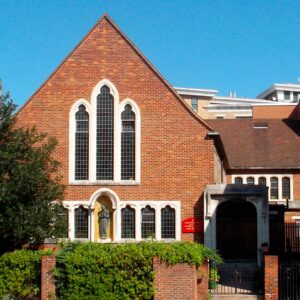
§3.10 The freehold for the original Methodist Chapel was bought in 1839, and in 1866 the Chapel was demolished [and] a larger one built. The freeholds for the abutting Medway and Allington Street terraces were also acquired at this time, but the chapel closed in 1913 due to a worsening financial position. The Roman Catholic Chapel of St Mary’s had closed when Westminster Cathedral opened in 1903. However, a new RC Chapel of Ease was established in 1916 on the site of the old Methodist Chapel. The RC Church of the Sacred Heart was then built in 1929, which extended back to Medway Street. The Westminster Baptist Chapel was built on the site of the old Roman Catholic Chapel in 1934-5.
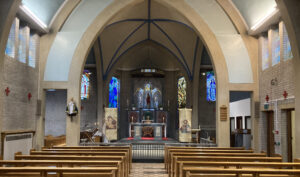
§3.11 The area was severely affected by bomb damage during the Second World War and the RC Church of the Sacred Heart was ruined along with the Georgian terraces from Medway Street into Arneway Street. Works to rebuild the Sacred Heart were completed in 1963, by H.G Glacy. A convent attached to the Church was built in Arneway Street, which was purchased by the Diocese of Westminster in 1989 and established as the Cardinal Hume Centre, for young homeless people.
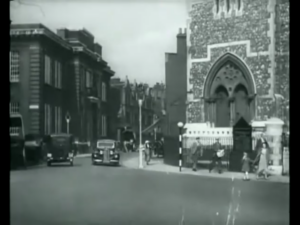
§4.18 The Roman Catholic Church of the Sacred Heart was built in 1962 by Harry G Clacy, to replace Westminster’s Chapel of Ease that was bombed in 1944. This red brick building is in a modest Gothic-style with a steep tiled roof, and is set back from the road by a small landscaped enclosure. The central feature on the front façade is a tall tripartite window with Gothic tracery. Beneath this is a band of six smaller windows with stone surrounds, which frame a small statue of Christ inset into the wall. A recent Lottery grant has funded the single-storey extension with a grass roof added to the side of the building, to provide teaching facilities.
§4.19 Attached to the Church, reaching to Arneway Street, is the Cardinal Hume Centre, originally built for the Corpus Domini Convent in the 1960s. This large red brick block is set back from the road behind area railings and a low-level walkway. Above the basement are three storeys, plus two stepped, set back roof storeys. With a functional architectural form, detail is minimal apart from the stone doorcase and lintels. The windows have retained their original metal casements.
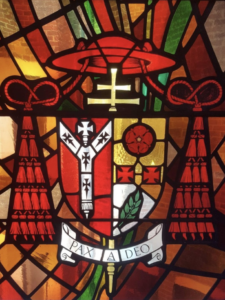
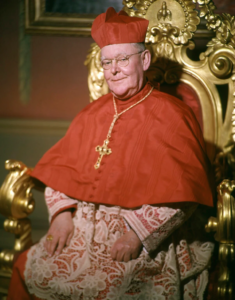
The building also maintains a visual link to the history of Ukrainian Greek Catholics in Great Britain via the right-hand stained glass window in the sanctuary. This displays the coat of arms of William Cardinal Godfrey who, as Archbishop of Westminster, served as the first Exarch (a bishop with a jurisdiction wider than the a metropolitan of a diocese) for Ukrainians in this country. He was solemnly enthroned at Great Britain’s first Ukrainian parish church on Saffron Hill, also under the patronage of Saint Theodore of Tarsus, on 9 November 1957. Cardinal Godfrey reposed in the Lord on 22 January 1963. For further information about the history of the Ukrainian Greek Catholic Church in Great Britain, see In Exile No Longer by Father Athanasius McVay.
